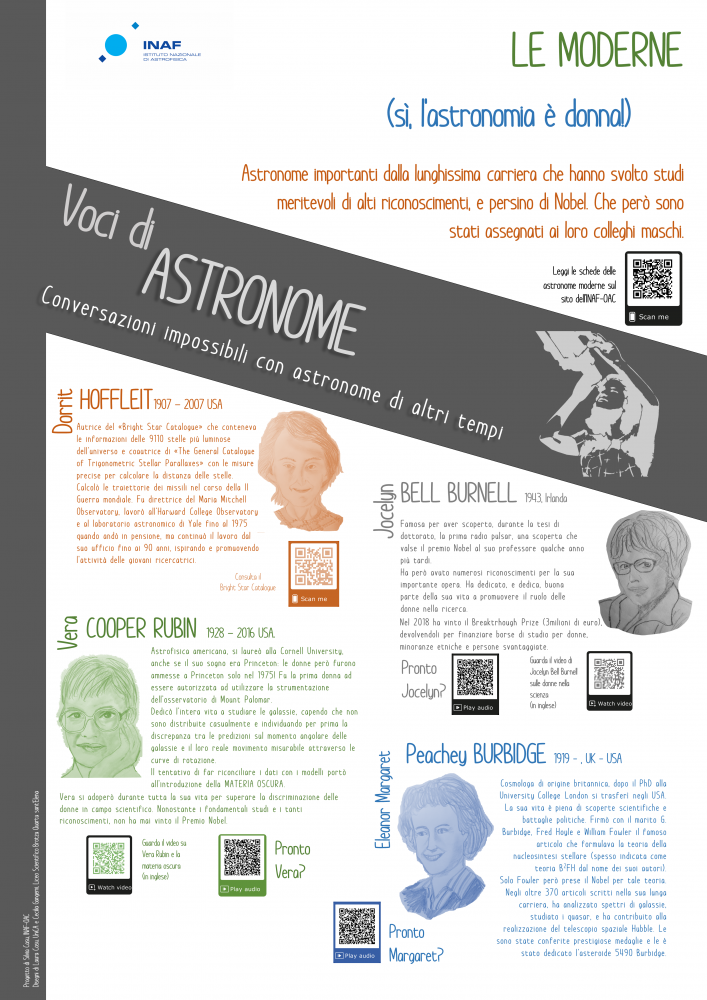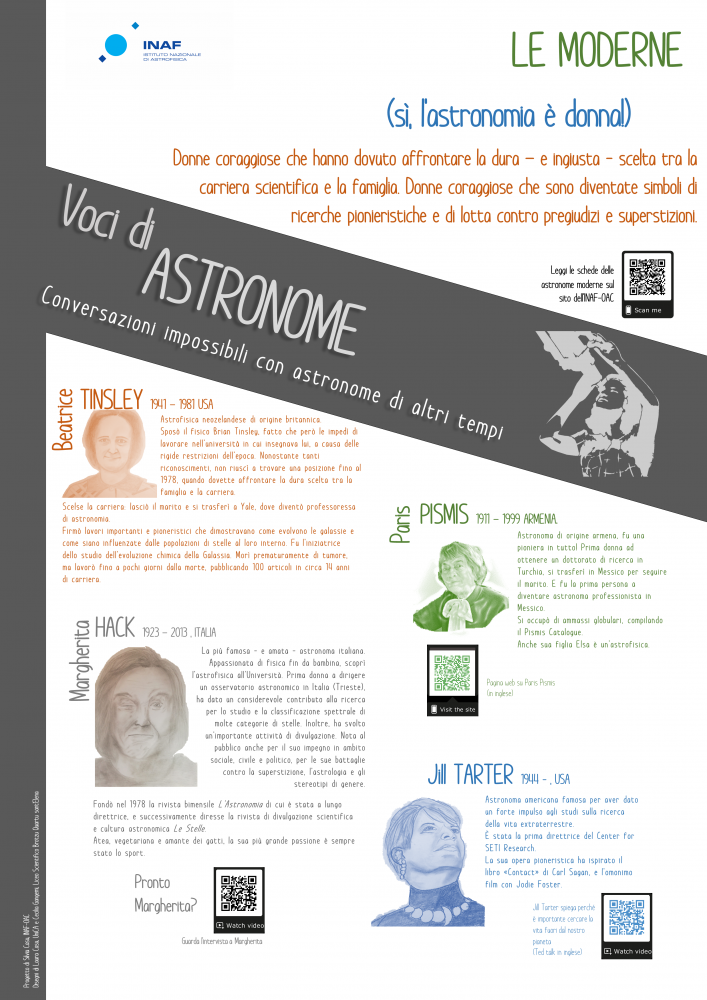Voices of Astronomers – the Modern Ones
BEATRICE TINSLEY (1941 -1981)
New Zealand astrophysicist of British origin. She married physicist Brian Tinsley, which prevented her from working at the university where he taught due to the strict restrictions of the time. She authored important and pioneering works demonstrating how galaxies evolve and how they are influenced by the populations of stars within them. She also initiated the study of the chemical evolution of the Galaxy. Despite many accolades, she couldn’t secure a position until 1978, when she faced the tough choice between family and career. She chose her career: she left her husband and moved to Yale, where she became a professor of astronomy.
She died prematurely of cancer but worked until a few days before her death, publishing 100 papers in about 14 years of her career.
PARIS PISMIS (1911 – 1999)
An Armenian-born astronomer, she was a pioneer in every way! The first woman to earn a PhD in Turkey, she moved to Mexico to follow her husband. She was the first person to become a professional astronomer in Mexico. She focused on globular clusters, compiling the Pismis Catalogue.
Her daughter Elsa is also an astrophysicist.
DORRIT HOFFLEIT (1907 – 2007)
Author of the “Bright Star Catalogue” which contained information on the 9110 brightest stars in the universe and co-author of “The General Catalogue of Trigonometric Stellar Parallaxes” with precise measurements for calculating the distance of stars.
She calculated missile trajectories during World War II. She was also the director of the Maria Mitchell Observatory, worked at the Harvard College Observatory and the Yale astronomical laboratory until 1975 when she retired, but continued her work from her office until she was 90, inspiring and promoting the work of young researchers.
VERA RUBIN (1928-2016)
American astrophysicist, graduated from Cornell University, although her dream was Princeton: women were only admitted to Princeton in 1975! She was also the first woman authorized to use the equipment at the Mount Palomar Observatory.
She dedicated her entire life to studying galaxies, being the first to identify the discrepancy between predictions about the angular momentum of galaxies and their actual movement measurable through rotation curves. The attempt to reconcile the data with models led to the introduction of DARK MATTER.
Despite the importance of her studies, Vera Rubin never received the Nobel Prize, although she was awarded many honors: Dickson Prize, National Medal of Science (1993), Henry Norris Russell Lectureship (1994), Gold Medal of the Royal Astronomical Society (1996), Bruce Medal (2003), and James Craig Watson Medal (2004).
Vera dedicated her life to overcoming discrimination against women in the scientific field.
MARGHERITA HACK (1923 – 2013)
The most famous – and beloved – Italian astronomer. Passionate about physics since childhood, she discovered astrophysics at university. The first woman to direct an astronomical observatory in Italy (the Trieste Observatory), she made a significant contribution to research for the study and spectral classification of many categories of stars. She also engaged in important outreach activities. In 1978, she founded the bimonthly magazine “L’Astronomia” of which she was a long-time director, and later directed the scientific and astronomical culture magazine “Le Stelle.”
An atheist, vegetarian, and cat lover, her greatest passion was always sports. She was also known to the public for her commitment to social, civil, and political issues, for her battles against superstition, astrology, and gender stereotypes.
ELEANOR MARGARET PEACHEY BURBIDGE (1919 – )
British-born cosmologist, after her PhD at University College London, she moved to the USA.
Her life is full of scientific discoveries and political battles. She co-authored with her husband G. Burbidge, Fred Hoyle, and William Fowler the famous paper that formulated the theory of stellar nucleosynthesis (often referred to as the B2FH theory after its authors. Only Fowler received the Nobel Prize for this theory.
In over 370 papers written in her long career, she analyzed galaxy spectra, studied quasars, and contributed to the development of the Hubble Space Telescope.
She was awarded prestigious medals and had the asteroid 5490 Burbidge named after her.
JOCELYN BELL BURNELL (1943 – )
Famous for discovering the first radio pulsar in 1969 during her doctoral thesis, a discovery that earned her professor, Antony Hewish, the Nobel Prize a few years later.
However, she received numerous accolades for her important work. She has dedicated much of her life to promoting the role of women in research.
In 2018, she won the Breakthrough Prize (€3 million), donating it entirely to fund scholarships for women, ethnic minorities, and disadvantaged people.
JILL TARTER (1944 – )
American astronomer famous for significantly advancing the study of the search for extraterrestrial life. She was the first director of the Center for SETI Research.
Her work inspired Carl Sagan’s book “Contact,” and the film of the same name starring Jodie Foster.

